Investigation of Spindt Cold Cathode Electron Guns for Terahertz Traveling Wave Tubes
Abstract
:1. Introduction
2. Theoretical Design
2.1. Cold Cathode
2.2. PPM-Focusing System
2.3. Design and Parameters
3. Experimental Results
4. Conclusions and Perspectives
Author Contributions
Funding
Data Availability Statement
Conflicts of Interest
References
- Srivastava, V. Novel current mode electronically tunable lossless integrator employing VDTA. In Proceedings of the 2015 Annual IEEE India Conference (INDICON), New Delhi, India, 17–20 December 2015; pp. 1–5. [Google Scholar]
- Beigang, R. The route from fundamental physics to real world applications. In Proceedings of the 2016 41st THz Technology International Conference on Infrared, Millimeter, and Terahertz waves (IRMMW-THz), Copenhagen, Denmark, 25–30 September 2016; p. 1. [Google Scholar]
- Han, S.-T.; Jeon, S.-G.; Shin, Y.-M.; Jang, K.-H.; So, J.-K.; Kim, J.-H.; Chang, S.-S.; Park, G.-S. Experimental investigations on miniaturized high-frequency vacuum electron devices. IEEE Trans. Plasma Sci. 2005, 33, 679–684. [Google Scholar]
- Spindt, C.A.; Brodie, I.; Humphrey, L.; Westerberg, E.R. Physical properties of thin-film field emission cathodes with molybdenum cones. J. Appl. Phys. 1976, 47, 5248–5263. [Google Scholar] [CrossRef]
- Charbonnier, F.M.; Barbour, J.P.; Garrett, L.F.; Dyke, W.P. Basic and applied studies of field emission at microwave frequencies. Proc. IEEE. 1963, 51, 991–1004. [Google Scholar] [CrossRef]
- Whaley, D.R.; Gannon, B.M.; Smith, C.R.; Armstrong, C.M.; Spindt, C.A. Application of Field Emitter Arrays to Microwave Power Amplifiers. IEEE Trans. Plasma Sci. 2002, 30, 998. [Google Scholar] [CrossRef]
- Yuan, X.; Wang, B.; Cole, M.T.; Zhang, Y.; Deng, S.; Milne, W.I.; Yan, Y. Theoretical Research on a Multibeam-Modulated Electron Gun Based on Carbon Nanotube Cold Cathodes. IEEE Trans. Electron Devices 2016, 63, 2919–2924. [Google Scholar] [CrossRef]
- Lin, C.M.; Chang, S.J.; Yokoyama, M.; Lin, I.N.; Chen, J.F.; Huang, B.R. Field-emission enhancement of Mo-tip field-emitted arrays fabricated by using a redox method. IEEE Electron Device Lett. 2000, 21, 560–562. [Google Scholar] [CrossRef]
- Schwoebel, P.R.; Spindt, C.A.; Holland, C.E. High current, high current density field emitter array cathodes. J. Vac. Sci. Technol. B 2005, 23, 691–693. [Google Scholar] [CrossRef]
- Makishima, H.; Miyano, S.; Imura, H.; Matsuoka, J.; Takemura, H.; Okamoto, A. Design and performance of traveling-wave tubes using field emitter array cathodes. Appl. Surf. Sci. 1999, 146, 230. [Google Scholar] [CrossRef]
- Li, X.; Bai, G.; Ding, M.; Zhang, F.; Feng, J.; Liao, F. Field Emitter Array Electron Gun for Traveling Wave Tubes. In Proceedings of the IVESC 2012, Monterey, CA, USA, 24–26 April 2012; p. 305. [Google Scholar]
- Fowler, R.H.; Nordheim, L. Electron emission in intense electric fields. Proc. R. Soc. Lond. 1928, 119, 173–181. [Google Scholar]
- Jensen, K.L.; Mukhopandhyay-Phillips, P.; Zaidman, E.G.; Nguyen, K.; Kodis, M.A.; Malsawma, L.; Hor, C. Electron emission from a single spindt-type field emitter: Comparison of theory with experiment. Appl. Surf. Sci. 1997, 111, 204. [Google Scholar] [CrossRef]
- van Veen, G.N.A. Collimated sputter deposition, A novel method for large area deposition of Spindt type field emission tips. J. Vac. Sci. Technol. B 1994, 12, 655. [Google Scholar] [CrossRef]
- Dvorson, L.; Ding, M.; Akinwande, A. Analytical electrostatic model of silicon conical field emitters I. IEEE Trans. Electron Devices 2001, 48, 134–143. [Google Scholar] [CrossRef]
- Dvorson, L.; Ding, M.; Akinwande, A.I. Analytical Electrostatic Model of Silicon Conical Field Emitters-Part II: Extension to Devices with Focusing Electrode. IEEE Trans. Electron Devices 2001, 48, 144–148. [Google Scholar] [CrossRef]
- Li, H.; Feng, J. Simulation Study of Field Emitter Arrays Using Opera-3D. In Proceedings of the 2008 IEEE International Vacuum Electronics Conference, Monterey, CA, USA, 22–24 April 2008; p. 351. [Google Scholar]
- Zhang, Y.; Liu, X.; Zhao, L.; Li, Y.; Li, Z. Simulation and Optimization of CNTs Cold Cathode Emission Grid Structure. Nanomaterials 2023, 13, 50. [Google Scholar] [CrossRef] [PubMed]
- Li, N.; Yan, F.; Pang, S.; Zeng, B.; Luo, Y. Novel Nanofabricated Mo Field-Emitter Array for Low-Cost and Large-Area Application. IEEE Trans. Electron Devices 2018, 65, 4369–4374. [Google Scholar] [CrossRef]

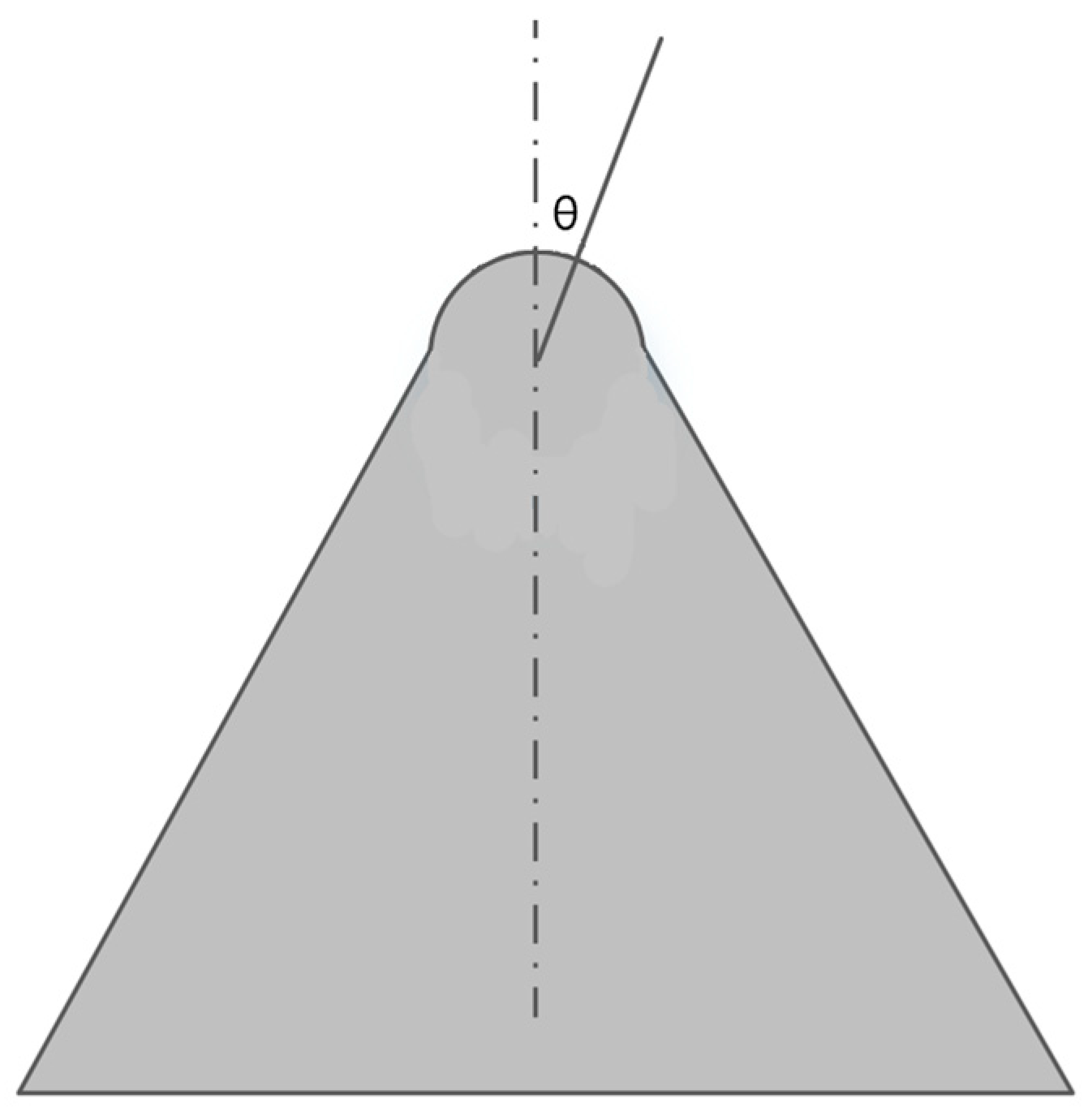

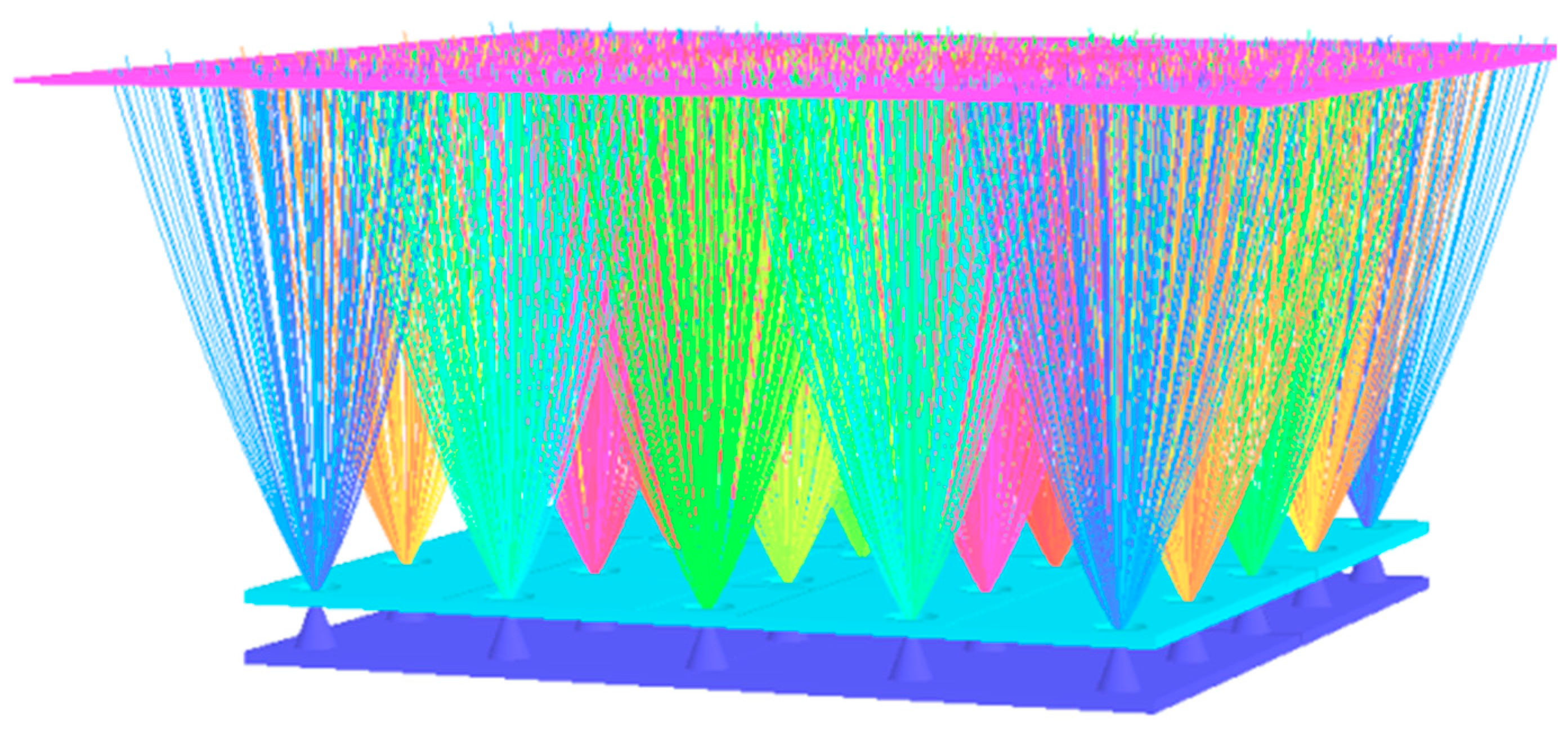

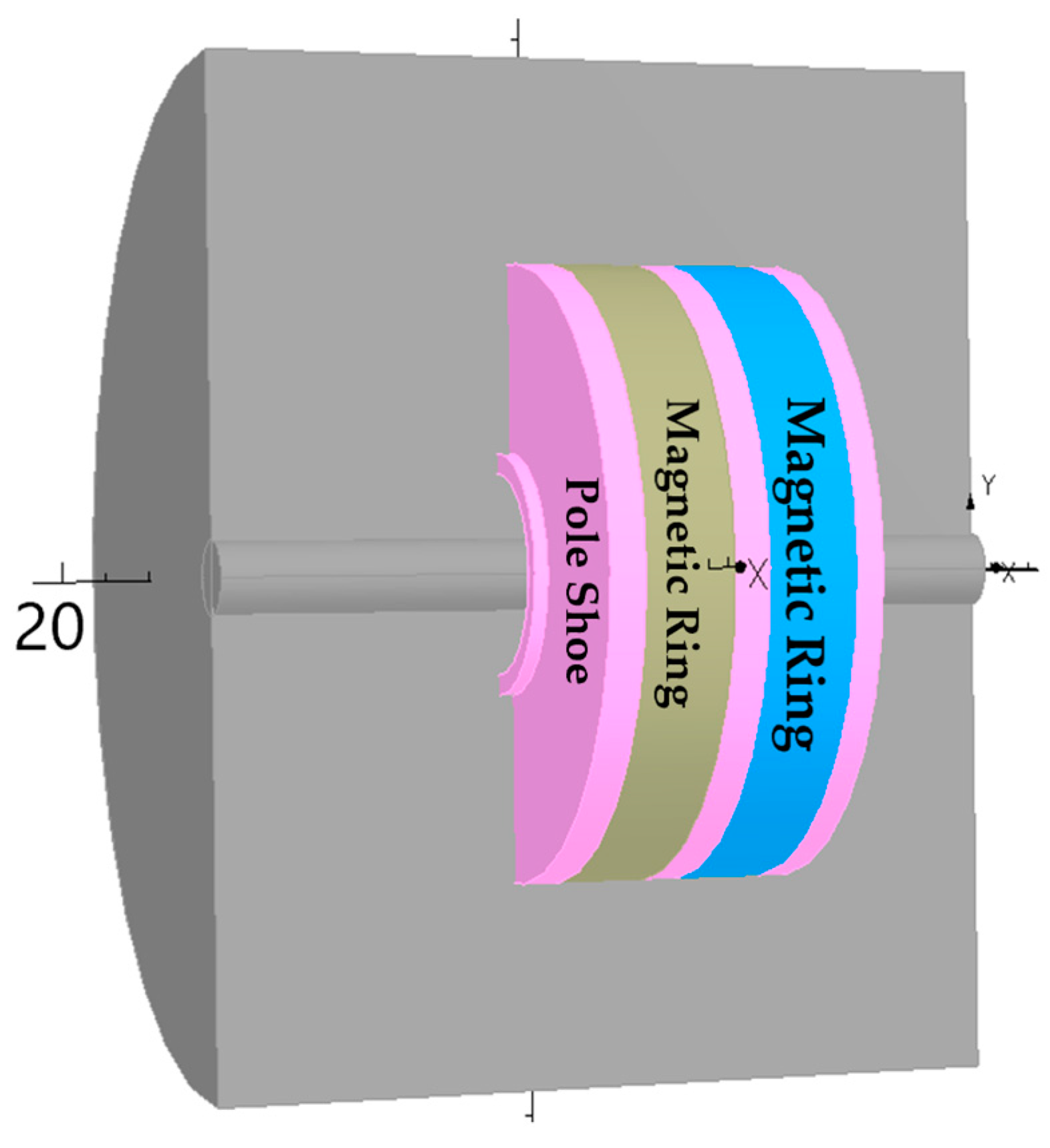
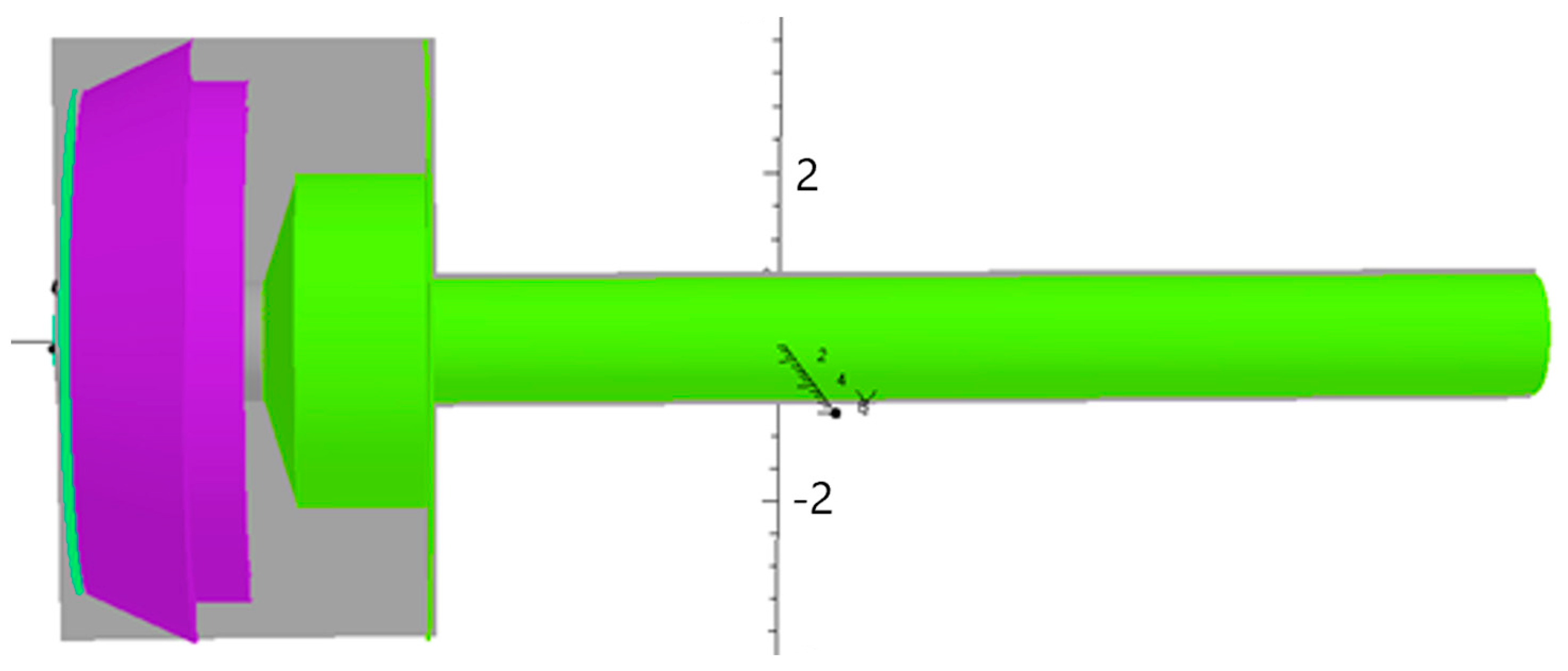
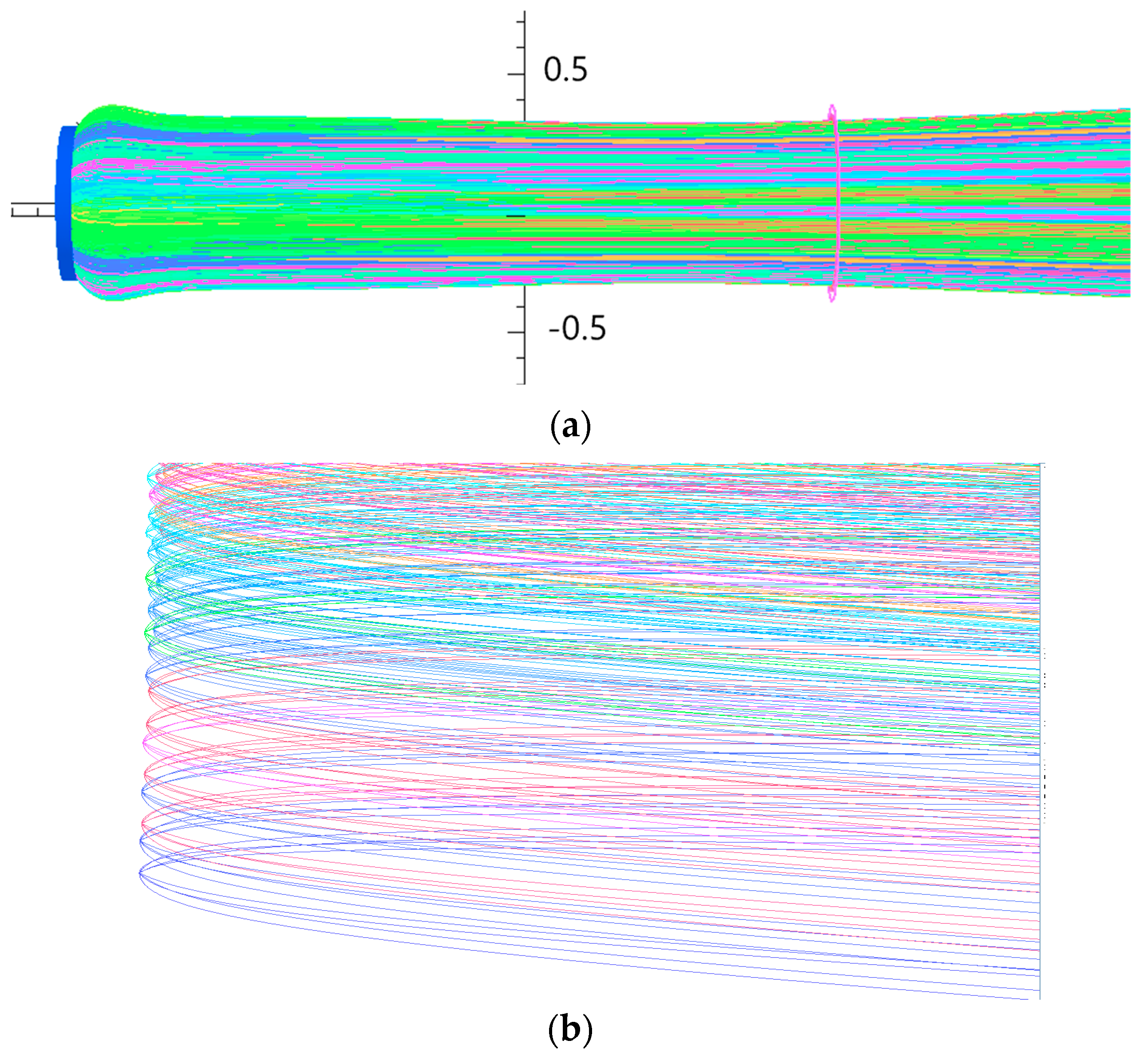



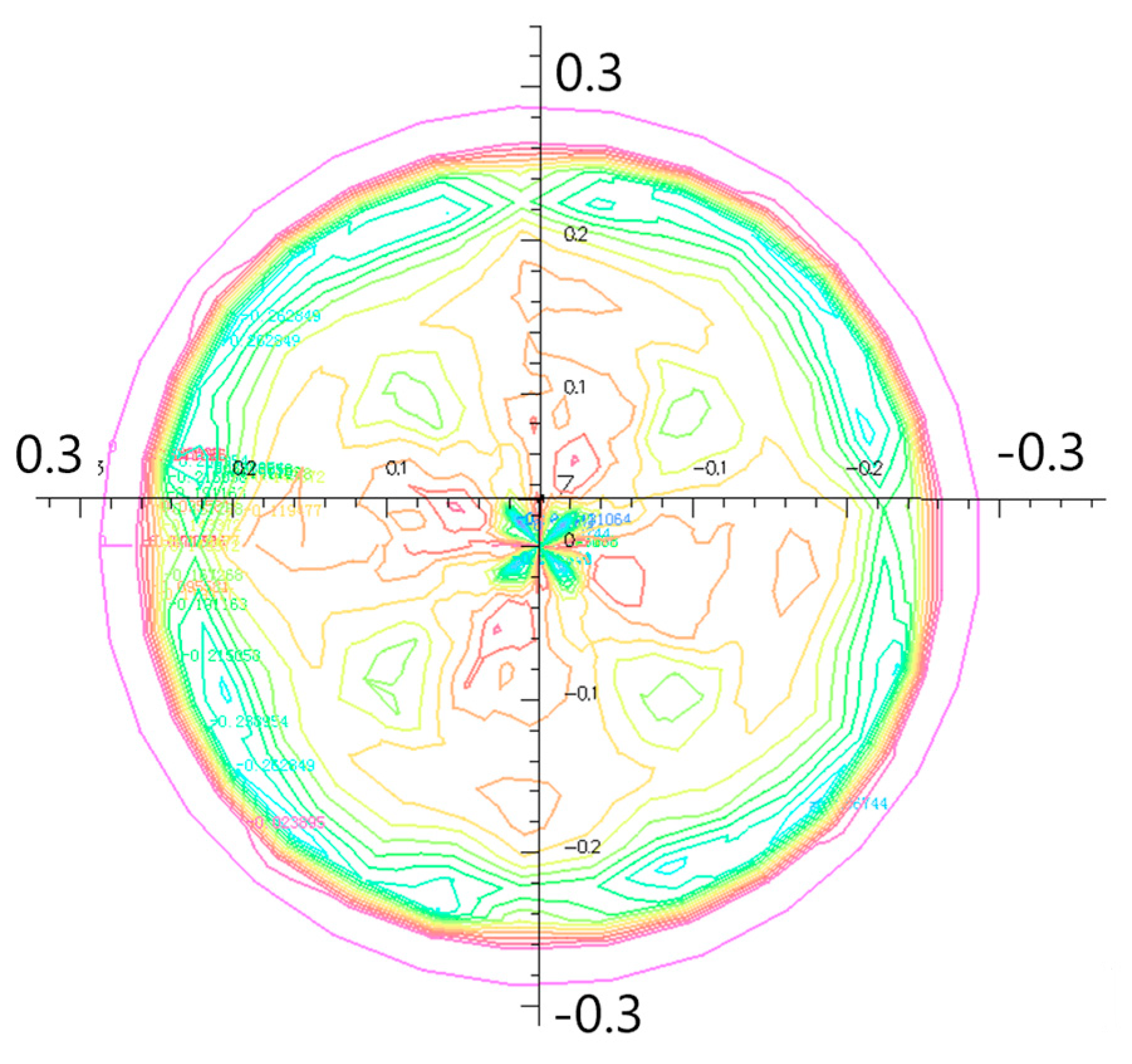


| Parameter | Value |
|---|---|
| Operating current | 30 mA |
| Gate voltage | 150 V |
| Focusing electrode voltage | 200 V |
| Anode voltage | 5000 V |
| Peak value of the PPM magnetic field | 0.122 T |
| Waist radius | 0.3 mm |
| Electron beam filling ratio | 0.5 |
Disclaimer/Publisher’s Note: The statements, opinions and data contained in all publications are solely those of the individual author(s) and contributor(s) and not of MDPI and/or the editor(s). MDPI and/or the editor(s) disclaim responsibility for any injury to people or property resulting from any ideas, methods, instructions or products referred to in the content. |
© 2023 by the authors. Licensee MDPI, Basel, Switzerland. This article is an open access article distributed under the terms and conditions of the Creative Commons Attribution (CC BY) license (https://creativecommons.org/licenses/by/4.0/).
Share and Cite
Li, Y.; Li, H.; Feng, J. Investigation of Spindt Cold Cathode Electron Guns for Terahertz Traveling Wave Tubes. Electronics 2023, 12, 4197. https://doi.org/10.3390/electronics12204197
Li Y, Li H, Feng J. Investigation of Spindt Cold Cathode Electron Guns for Terahertz Traveling Wave Tubes. Electronics. 2023; 12(20):4197. https://doi.org/10.3390/electronics12204197
Chicago/Turabian StyleLi, Yongtao, Hanyan Li, and Jinjun Feng. 2023. "Investigation of Spindt Cold Cathode Electron Guns for Terahertz Traveling Wave Tubes" Electronics 12, no. 20: 4197. https://doi.org/10.3390/electronics12204197
APA StyleLi, Y., Li, H., & Feng, J. (2023). Investigation of Spindt Cold Cathode Electron Guns for Terahertz Traveling Wave Tubes. Electronics, 12(20), 4197. https://doi.org/10.3390/electronics12204197







